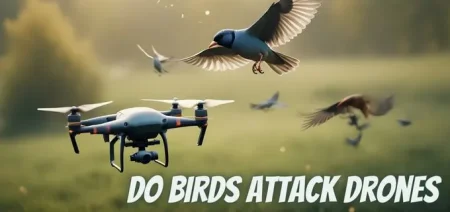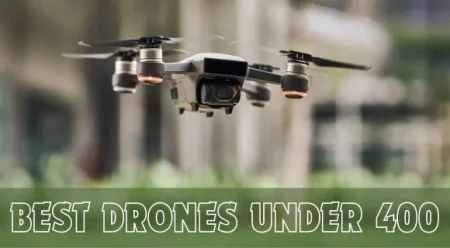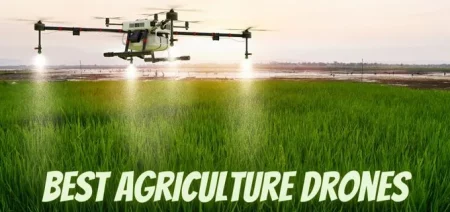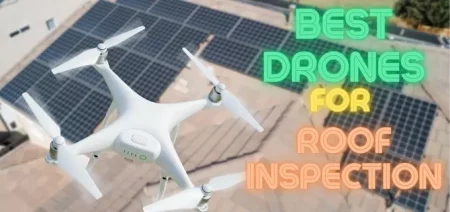
In this blog post, we embark on a thrilling journey to explore the best drones with obstacle avoidance capabilities. These remarkable flying machines have been meticulously engineered to detect and evade obstacles, ensuring your flights are not only awe-inspiring but also safe and seamless.
Best Drones With Obstacle Avoidance
Get ready for an exciting journey as we introduce you to drones that revolutionize the concept of safe and seamless flights. Whether you’re an experienced pilot looking for an upgrade or a beginner eager to explore aerial photography, our carefully selected drones will redefine your flying experience.
So fasten your seatbelts, fellow drone enthusiasts, as we lift off into a world of advanced technology, precision engineering, and unforgettable aerial experiences. Get ready to soar through the skies with the best drones featuring obstacle avoidance, where every flight is a moment of exhilaration and a testament to the boundless possibilities of modern drone technology.
Understanding Obstacle Avoidance
Obstacle avoidance systems in drones are a set of sensors and software that allows a drone to detect and avoid objects in its flight path. This feature is important in preserving the drone’s integrity, protecting the surrounding environment, and allowing for autonomous flight.
The significance of obstacle avoidance in drone operations is multifold.
- It helps preserve the integrity of the drone by preventing collisions, thereby prolonging the drone’s lifespan.
- It enhances safety by reducing the risk of damage to other objects or individuals within the drone’s operational environment.
- And perhaps most excitingly, obstacle avoidance paves the way for autonomous drone operation. This capacity for independent flight makes drones even more versatile, capable of tasks ranging from performing intricate aerial photography maneuvers to delivering packages across challenging terrains.
Obstacle avoidance systems typically use sensors that detect objects in the drone’s path. Based on the data gathered these sensors signal the drone’s control system to adjust the flight path or halt the drone, thereby avoiding a collision.
Top Products:
Types of Obstacle Avoidance Systems Available in Drones
Drones employ different types of obstacle avoidance systems to detect and avoid obstacles in their flight path. Let’s explore the various types of obstacle avoidance systems commonly found in drones:
Single Direction Obstacle Avoidance:
In this basic form of obstacle avoidance, drones are equipped with sensors that detect obstacles in a single direction. These sensors are typically positioned on the front of the drone and help prevent collisions when the drone is moving forward.
Although this system offers a certain degree of protection, it has limitations when it comes to detecting obstacles from alternative directions.
Bi-Directional Obstacle Avoidance:
Bi-directional obstacle avoidance systems improve upon the single-direction system by adding sensors on both the front and rear of the drone. With this capability, the drone can detect and evade obstacles in both forward and backward movements.
Bi-directional obstacle avoidance enhances safety during maneuvers such as reversing or retreating from an obstacle.
Tri-Directional Obstacle Avoidance:
Tri-directional obstacle avoidance systems take the concept further by adding sensors on the left and right sides of the drone in addition to the front and rear sensors. It allows the drone to detect and avoid obstacles during forward and backward movements and sideways maneuvers.
Tri-directional obstacle avoidance provides enhanced protection and flexibility when flying in more complex environments.
Omni-Directional Obstacle Avoidance:
Omni-directional obstacle avoidance systems utilize sensors positioned in multiple directions, covering all sides of the drone. These systems often include sensors on the top and bottom as well, enabling the drone to detect obstacles from above and below.
Omni-directional obstacle avoidance offers the highest level of protection and situational awareness, allowing the drone to navigate highly crowded or challenging environments more confidently.
Technology Used for Obstacle Avoidance Systems
Drones employ various types of obstacle avoidance systems, each utilizing different sensors and technologies to detect and navigate obstacles. Let’s explore the most commonly used systems:
Ultrasonic Sensors:
By emitting high-frequency sound waves and analyzing their return time, ultrasonic sensors enable the drone to measure the distance to obstacles.
Limitations: Their range is limited, and they may have difficulty detecting small or non-rigid obstacles. Additionally, they can be affected by ambient noise, which may interfere with their accuracy.
Vision Sensors:
Vision sensors, typically in the form of cameras, capture visual data of the drone’s surroundings. Advanced vision systems employ computer vision algorithms and machine learning techniques to analyze this data and identify objects or obstacles.
Vision sensors can provide detailed environmental information and are particularly useful for obstacle avoidance during complex flight maneuvers.
Limitations: Vision sensors rely on lighting conditions, and poor lighting can affect their performance. Additionally, their effectiveness can be limited in complex or high-speed flight scenarios.
Infrared Sensors:
They work by emitting infrared signals and measuring the reflected signals. Infrared sensors are effective for detecting objects in low-light conditions and are commonly used in close-range obstacle avoidance systems.
Limitations: Infrared sensors have a limited range and may struggle to detect transparent or non-reflective obstacles. Extreme temperatures can have an impact on the performance of these sensors.
Lidar Systems:
Lidar (Light Detection and Ranging) systems employ lasers to generate precise 3D maps of the drone’s surroundings. It can create highly accurate depth maps by measuring the time it takes for the laser beams to return after hitting objects.
These drones are more accurate and can achieve unparalleled precision in detecting and avoiding obstacles. However, Lidar systems are typically found in higher-end and professional-grade drones due to their higher cost.
How to Select the Best Collision Avoidance Drones
When choosing a drone with obstacle avoidance, it’s crucial to consider several factors to select the best system for your needs. Here are some key points to consider:
Sensor Technology:
Infrared Sensors: Drones equipped with infrared sensors can detect obstacles by emitting infrared signals and analyzing the reflected signals. These sensors are particularly effective in low-light conditions and are less affected by ambient light or shadows. They can provide reliable obstacle detection in close-range scenarios.
- Vision Sensors: Vision sensors, typically in the form of cameras, capture visual data of the drone’s surroundings.
- Vision sensors provide detailed information about the environment and can detect various obstacles, including stationary objects and moving subjects.
When selecting a drone, consider the sensor technology used and evaluate its effectiveness based on user reviews, expert opinions, and specifications provided by the manufacturer.
Range and Accuracy:
The range and accuracy of the collision avoidance system are crucial for safe drone operations. Consider the following aspects:
Detection Range:
Check the specified detection range of the obstacle avoidance system. A longer detection range allows the drone to identify obstacles from a greater distance, giving it more time to react and avoid collisions.
Obstacle Tracking:
Look for drones with obstacle avoidance systems that can track and monitor moving objects. It is useful where there may be dynamic obstacles, such as vehicles or pedestrians.
Accuracy and Precision:
Assess the accuracy and precision of the collision avoidance system. A high level of accuracy ensures that the drone can reliably detect obstacles and make precise adjustments to its flight path.
Intended Use and Environment:
Determine the specific purpose for which you’ll be using the drone. Different applications may require different levels of obstacle avoidance capabilities.
For example, if you plan to use a drone for aerial photography in complex urban environments, you need a system with advanced obstacle detection and avoidance features.
Cost and Budget:
Consider your budget and the price range of drones with obstacle avoidance. Higher-end drones often offer more sophisticated obstacle avoidance systems but come with a higher price tag. So choose the drone within your budget.
Flight Time:
Longer flight times are useful for achieving the aerial task easily. Consider drones that provide sufficient flight time to accommodate your needs without compromising obstacle avoidance functionality.
Camera Quality:
If capturing stunning aerial photographs or videos is a crucial aspect of your drone operations, it is essential to evaluate the quality and capabilities of the camera. Look for drones with high-resolution cameras, stabilized gimbals, and intelligent flight modes that work seamlessly with the obstacle avoidance system.
User-Friendliness:
An intuitive control system and user-friendly features enhance the overall flying experience and make it easier to utilize the obstacle avoidance system effectively.
By carefully considering these factors and matching them to your specific requirements, you can select the best obstacle avoidance system that meets your needs and offers a safe and enjoyable drone flying experience.
How does obstacle avoidance on a drone work?
Obstacle avoidance on a drone relies on sensors, algorithms, and intelligent systems to detect and respond to obstacles. The process involves sensor inputs from ultrasonic, vision, infrared, and Lidar sensors, which collect environmental data. This data is processed by the drone’s onboard computer or flight controller to detect obstacles.
Collision risk assessment is performed based on factors like distance and size, and if a risk is identified, the system adjusts the drone’s flight path to avoid the Obstacle. The system continuously adapts the flight path in real time and may provide alerts or feedback to the operator regarding obstacle presence and avoidance actions.
Purpose of obstacle avoidance drones?
The purpose of obstacle avoidance drones is to enhance safety, improve maneuverability, and enable autonomous flight in various applications. Here are the key purposes and benefits of obstacle avoidance drones:
Preventing Collisions:
The primary purpose of obstacle avoidance drones is to prevent collisions with objects, structures, or other aircraft. Using sensors and intelligent algorithms, these drones can detect obstacles in their flight path and take evasive action to avoid potential collisions, reducing the risk of accidents and damage.
Enhancing Safety:
Obstacle avoidance drones enhance flight safety significantly by offering an additional layer of protection against potential hazards. They are particularly valuable when operating in complex or dynamic environments, such as crowded urban areas, dense forests, or industrial sites with obstacles like power lines or buildings.
Autonomous Flight:
Obstacle avoidance technology enables drones to navigate autonomously without constant manual control from a human operator. By detecting and avoiding obstacles in real-time, these drones can make independent flight decisions and adjust their flight paths to circumvent obstacles, allowing for more efficient and safer autonomous missions.
Facilitating Aerial Photography and Videography:
Drones with obstacle avoidance are highly beneficial for aerial photography and videography. They allow photographers and filmmakers to focus on capturing stunning shots without worrying about potential collisions. The obstacle avoidance system provides a safety net, enabling the drone to maintain a safe distance from objects while capturing aerial footage.
Enabling Precision Agriculture:
In the field of agriculture, obstacle avoidance drones are used to monitor crops, identify plant health issues, and perform targeted spraying or fertilization. With obstacle avoidance capabilities, these drones can navigate around trees, power lines, or other obstacles in agricultural landscapes, providing accurate data and ensuring efficient operations.
Industrial Inspections:
Obstacle avoidance drones play a crucial role in industrial inspections, such as inspecting infrastructure, pipelines, or construction sites. They can navigate complex structures, confined spaces, or hazardous environments while avoiding obstacles, ensuring safe and thorough inspections without risking human personnel.
Search and Rescue Operations:
In search and rescue missions, obstacle avoidance drones can assist in locating missing persons or identifying areas of interest. The drones can navigate through challenging terrains, dense forests, or disaster-stricken areas, avoiding obstacles and providing valuable situational awareness to search and rescue teams.
Top Drone With Collision Avoidance
Explore our meticulously researched collection of the finest drones featuring advanced obstacle avoidance capabilities. These state-of-the-art aerial devices have been expertly crafted to navigate the skies with unparalleled safety and precision, guaranteeing each flight is an exhilarating and seamless adventure. Let’s dive in and explore the features and reviews of these drones:
1. DJI Mavic 3 Pro Drone
Best Pick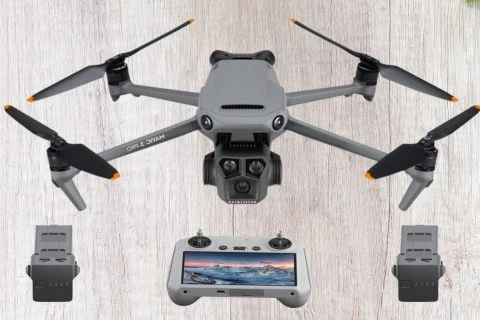
REASONS TO BUY
✓Excellent Cameras and video quality-
✓Longer flight time
✓Great transmission range
✓Easy to fly and use.
✓Foldable design for portability
REASONS TO AVOID
✗Expensive
The world of drones has witnessed remarkable advancements in recent years, and the DJI Mavic 3 Pro Drone stands out as a prime example of cutting-edge technology. Boasting exceptional obstacle avoidance capabilities and a flagship triple-camera system, this drone offers an unmatched aerial experience.
With an impressive flight time, long-range video transmission, and the ability to navigate safely around obstacles, the DJI Mavic 3 Pro Drone sets a new standard for professional-grade aerial photography and videography.
Omnidirectional Obstacle Sensing:
One of the standout features of the DJI Mavic 3 Pro Drone is its omnidirectional obstacle sensing. It is equipped with eight high-resolution sensors and a powerful computing engine. This drone effectively plans a safe route by detecting and avoiding obstacles in all directions.
The advanced obstacle sensing system enables the drone to navigate complex environments with confidence, providing pilots with peace of mind and reducing the risk of collisions.
Flagship Triple-Camera System:
The DJI Mavic 3 Pro Drone is a true game-changer for photographers and videographers. Its flagship triple-camera system comprises a high-resolution primary camera, an ultra-wide-angle lens, and a powerful zoom lens.
This versatile setup allows users to capture breathtaking shots from various perspectives and distances. Whether you’re looking to capture sweeping landscapes or zoom in on distant subjects, the Mavic 3 Pro delivers exceptional image and video quality with its advanced camera technology.
Flight Time and Range:
In addition to its impressive obstacle avoidance and camera capabilities. The DJI Mavic 3 Pro Drone offers a remarkable flight time of up to 43 minutes.
Furthermore, the drone’s 15km video transmission range allows for seamless real-time monitoring and control, even when operating at a considerable distance.
Batteries and Weather Considerations:
To enhance the overall flying experience, the DJI Mavic 3 Pro Drone comes with three batteries, allowing extended flight sessions before recharging.
It’s worth noting that DJI recommends avoiding severe weather conditions during flight. Adverse weather can potentially impact the drone’s performance and compromise its obstacle avoidance capabilities. Additionally, the company advises against flying the drone close to reflective surfaces like water or snow, as it may hinder the vision system’s accuracy.
Verdict:
The DJI Mavic 3 Pro Drone is a dream drone for professionals and drone enthusiasts seeking unparalleled aerial photography and videography experience. Its omnidirectional obstacle sensing, flagship triple-camera system, extended flight time. It has long-range video transmission make it a top choice in the category of drones with obstacle avoidance.
While it is true that this cutting-edge drone comes at a higher price point. But it is exceptional performance and advanced features justify the investment for those who prioritize quality, reliability, and breathtaking aerial footage.
2. DJI Mini 3 Pro (DJI RC)

REASONS TO BUY
✓Lightweight
✓48MP Photo Camera
✓Ideal for surveillance
✓Decent Flight Time
REASONS TO AVOID
✗expensive
It is an exceptional drone that excels in this category. With its compact size, advanced obstacle avoidance features, and impressive flight capabilities, it has garnered significant attention from drone enthusiasts. Compared to DJI Mavic 3, it has a low price.
We have already written a review of the DJI Mini 3 Pro drone on our website. Let’s provide you with a brief overview of its key features and performance. For a comprehensive analysis, we recommend checking out the in-depth review on our site.
3. Autel Robotics EVO 2 Pro V3
Staff Pick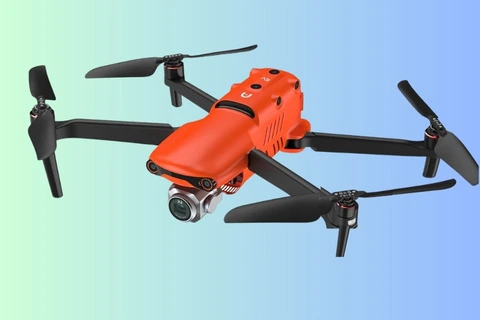
REASONS TO BUY
✓360° Obstacle Avoidance
✓6K HDR Video
✓Best Performance with 40minuts flight & 9.5miles transmission
✓Can fly on manual track setting
✓Auto accurate landing
REASONS TO AVOID
✗Expensive
Regarding drones with obstacle avoidance capabilities, the Autel Robotics EVO 2 Pro V3 stands out as a professional-grade option. With its comprehensive 360° obstacle avoidance system, industry-leading picture quality, and advanced flight intelligence, this drone delivers an exceptional aerial experience.
Offering impressive flight time, long-range transmission capabilities, and intelligent tracking features, the EVO 2 Pro V3 sets new standards for performance and versatility.
The Fly More Combo, Version 3 package also includes multiple batteries and accessories, enhancing the overall flying experience.
360° Obstacle Avoidance System:
The Autel Robotics EVO 2 Pro V3 is equipped with a sophisticated 360° obstacle avoidance system. It utilizing a binocular vision sensing system to detect obstacles from all directions. This advanced technology ensures a safe and collision-free flight experience, allowing the drone to navigate complex environments with ease and precision.

Camera
With its cutting-edge camera technology, the EVO 2 Pro V3 establishes itself as a leader in picture quality. This drone can capture stunning 6K HDR videos and employ the Moonlight Algorithm 2.0, and delivers exceptional image detail and dynamic range.
Max Performance:
The EVO 2 Pro V3 boasts impressive performance metrics, including a maximum flight time of 40 minutes. It has a transmission range of 9.5 miles, and a top speed of 45 mph. These specifications enable extended flight sessions, long-range operations, and the ability to easily cover vast distances.
Fly More Combo, Version 3:
The EVO 2 Pro V3 Fly More Combo, Version 3 package includes:
- Two batteries.
- An extra 64GB SD card.
- Three pairs of propellers.
- An ND filter set.
- A landing pad.
- A custom lens wipe.
These additional accessories further enhance the flying experience, providing convenience and versatility to capture the perfect shot in various scenarios.

The drone’s flight intelligence features enhance the overall flying experience, providing advanced capabilities such as Dynamic Track 2.1 and a mission planner for precise and autonomous flight paths.
Verdict:
The Autel Robotics EVO 2 Pro V3 reigns supreme among professional drones. Which is featuring a 360° obstacle avoidance system, superior picture quality, and advanced flight intelligence. It is the ultimate choice for photographers and videographers aiming to capture stunning shots and footage from the sky.
With remarkable flight time, long-range transmission, and intelligent tracking features, this drone delivers exceptional performance and versatility. Including extra batteries and accessories in the Fly More Combo, Version 3 package further enhances the overall value and convenience.
If you are looking for a professional-grade drone with outstanding obstacle avoidance capabilities and industry-leading picture quality, the Autel Robotics EVO 2 Pro V3 is a clear frontrunner.
4. EXO Mini Pro drone
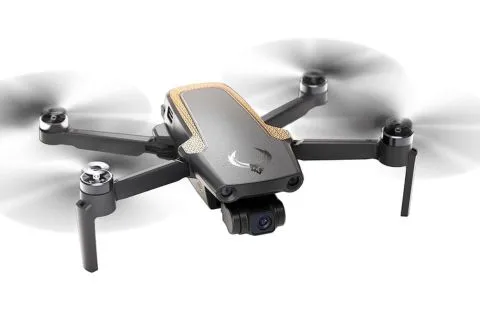
REASONS TO BUY
✓Advanced Flight Mode.
✓Level 5 Wind Resistance.
✓Obstacle Avoidance and Foldable Design.
✓Affordable
REASONS TO AVOID
✗–
The EXO Mini Pro drone offers a compelling option for beginners and enthusiasts looking for an affordable yet feature-packed drone with obstacle-avoidance capabilities. With its three-way obstacle avoidance system, lightweight and foldable design, and a host of auto-features, this drone delivers a user-friendly and enjoyable flying experience.
Equipped with a Sony CMOS image sensor for 4K UHD HDR video recording, exceptional wind resistance, and advanced flight modes, the EXO Mini Pro drone provides impressive value for its price point.
Obstacle Avoidance and Foldable Design:
The EXO Mini Pro drone boasts a three-way obstacle avoidance system that enhances flight safety. This technology allows the drone to sense and avoid obstacles from multiple directions, minimizing the risk of collisions.
Its foldable and lightweight design makes it highly portable, enabling users to carry it easily on their outdoor adventures.
Sony CMOS
The EXO Mini Pro drone features a Sony CMOS image sensor, captures stunning 4K UHD HDR videos at a high bitrate of 200mbps. This ensures exceptional image quality with rich colors and details, making your aerial footage truly immersive and visually impressive.
Level 5 Wind Resistance:
The drone’s robust construction and advanced flight dynamics provide it with an impressive level of wind resistance. With its Level 5 wind resistance rating, the EXO Mini Pro drone can withstand strong gusts, allowing for stable and controlled flights even in challenging weather conditions.
Auto-Features for Convenience:
The EXO Mini Pro drone comes with various auto-features that enhance user convenience. The incorporated functionalities comprise Auto Return & Landing, Automatic Takeoff/Landing, Return on Lost Connection, Return on Low Battery, and Drone GPS Pin Locating System. These functionalities provide peace of mind by automating critical flight actions and ensuring the safe return of the drone.
Advanced Flight Modes:
The drone offers a variety of advanced flight modes to enhance creativity and capture unique shots. These include Follow Me mode for autonomous tracking, 4K HyperLapse with three different motion options, Circle Me mode for capturing circular footage, Return to Home with GPS features, and 5+ Quickshots to easily create cinematic aerial videos.
Expert Verdict:
The EXO Mini Pro drone combines affordability, beginner-friendly features, and advanced obstacle avoidance capabilities into a compelling package. Its three-way obstacle avoidance system, lightweight foldable design, and impressive auto-features offer beginners an enjoyable and safe flying experience.
The inclusion of a Sony CMOS image sensor for 4K UHD HDR video recording, exceptional wind resistance, and advanced flight modes further enhance its value. If you are looking for an affordable drone with obstacle avoidance that doesn’t compromise on features or performance, the EXO Mini Pro drone is an excellent choice.
5. The EXO X7 Ranger Plus: Cheap Drone With Obstacle Avoidance
Budget Pick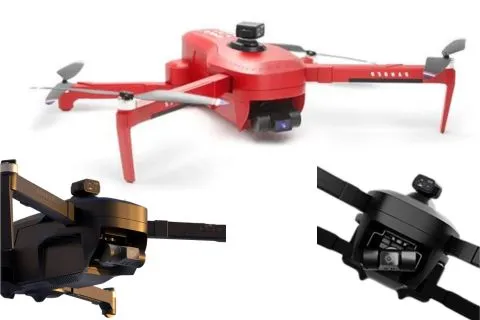
REASONS TO BUY
✓Affordable price
✓Level 6 wind resistance
✓27MPH Speed
✓Good Battery time & Range
REASONS TO AVOID
✗Lost connection at 800m.
The EXO X7 Ranger Plus is a top non-DJI budget option for drone enthusiasts seeking obstacle avoidance capabilities. With a second-generation 3-axis gimbal, improved battery, and premium-grade controller, this drone offers a comfortable first experience.
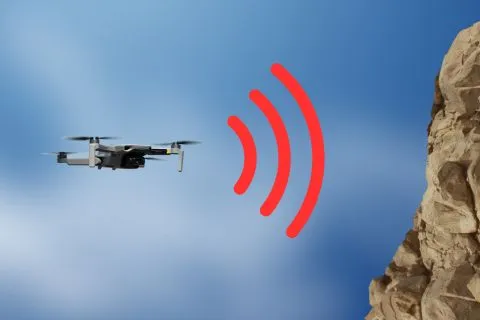
It joins the premium club of obstacle avoidance drones, distinguishing it from its predecessor. Weighing 624 grams and foldable, it boasts a maximum flight time of 25 minutes per battery and a speed of 27 mph.
It has a level 6 wind resistance and a recommended range of 800 meters. The 1/3.2 CMOS camera shoots 4K images and excellent 2K videos. The EXO laser obstacle sensors provide 360-degree detection, and additional features include Circle, Return to Home, and Follow Me.
We have written a detailed review of EXO X7 Ranger Plus; you can visit here.
6. Drone X Pro LIMITLESS 4
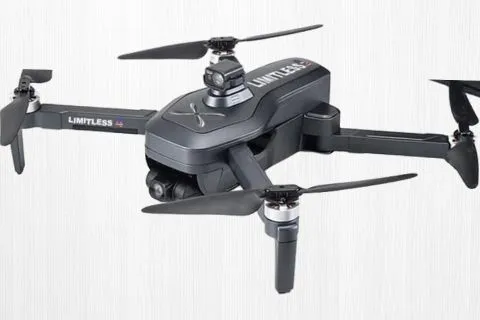
REASONS TO BUY
✓Affortable
✓Travel Case Included
✓Decent Flight Time
✓Dual Camera
REASONS TO AVOID
✗Poor customer service
✗Some Customers Face the connectivity/pairing issue
Regarding drones with obstacle avoidance, the LIMITLESS 4 Drone presents an appealing option in the market. With its innovative obstacle avoidance system that utilizes a laser for scanning, a professional 3-axis gimbal camera capturing 4K UHD resolution, and various flight modes like Follow Me, this drone offers comprehensive features.
While it boasts a decent flight time and safety measures such as GPS auto return home failsafe, it’s important to consider some customer-reported pairing issues and misconceptions about its waterproof capabilities.
Additionally, its resemblance to the EXO Ranger 7 has been noted. This review’ll delve into the drone’s key features and provide an overview of its performance.
Obstacle Avoidance:
The Drone X Pro LIMITLESS 4 distinguishes itself by incorporating an obstacle avoidance system that relies on laser scanning. This function empowers the drone with the capability to identify and bypass hindrances in its trajectory, enhancing the safety and control of its aerial journey.
Camera:
Equipped with a professional 3-axis gimbal camera, the LIMITLESS 4 captures high-quality footage with its 4K UHD resolution. This camera stability ensures smooth and steady recordings, allowing users to capture stunning aerial visuals.
Follow Me Mode:
The Follow Me mode is a popular feature among drone enthusiasts, and the LIMITLESS 4 does not disappoint in this aspect. With this mode enabled, the drone will autonomously track and follow a specified target, enabling effortless hands-free filming or photography.
Long Flight Time:
With the LIMITLESS 4, one can enjoy a commendable flight duration of as much as 30 minutes on just one battery charge. This extended flight duration allows for more extended aerial sessions, providing ample time to explore and capture the desired shots.
Safety Features:
The LIMITLESS 4 is equipped with GPS auto return home failsafes to enhance safety during flight. These fail-safe mechanisms kick in if the battery reaches critically low levels or there is a signal loss, ensuring the drone returns to its takeoff point automatically.
Customer Feedback and Considerations:
While the Drone X Pro LIMITLESS 4 presents itself as a reasonable option, it’s worth noting that some customers have reported pairing issues with the drone. Additionally, it’s important to manage expectations regarding its advertised waterproof capabilities, as customers have found it to be less reliable than claimed. Furthermore, it has been observed that the LIMITLESS 4 shares similarities with the EXO Ranger 7, raising questions about its originality and uniqueness.
Verdict:
The Drone X Pro LIMITLESS 4 is a competitively priced drone with obstacle avoidance capabilities, a professional 3-axis gimbal camera, and a range of flight modes. It offers a decent flight time, safety features, and the ability to capture high-resolution aerial footage.
However, it’s important to consider the reported pairing issues and the discrepancy between advertised waterproof capabilities and customer experiences.
Furthermore, its resemblance to the EXO Ranger 7 raises questions about originality. Overall, for those seeking an affordable option with obstacle avoidance and professional camera capabilities, the Drone X Pro LIMITLESS 4 may be worth considering, provided one considers the mentioned considerations.
Is obstacle avoidance worth it on a drone?
Indeed, adding obstacle avoidance is a valuable feature for a drone. Here are several reasons why obstacle avoidance is a valuable feature:
Enhanced Safety:
Obstacle avoidance significantly enhances the safety of drone operations. This function aids in averting collisions with entities, structures, or other flying machines, diminishing the possibility of mishaps and damage.
It is especially important when flying in complex or crowded environments where obstacles may not be easily visible to the operator.
Protection for the Drone:
Obstacle avoidance systems help protect the drone itself. By detecting and avoiding obstacles, the system can prevent damage to the drone’s propellers, body, or other components, prolonging its lifespan and reducing maintenance and repair costs.
Reduced Risk of Human Error:
Human error is a common cause of drone accidents. Obstacle avoidance systems act as an additional layer of protection, mitigating the impact of pilot errors or distractions. They provide an extra set of “eyes” that can detect and respond to obstacles even if the operator fails to notice them in time.
Autonomous Flight Capabilities:
Obstacle avoidance enables drones to operate autonomously and navigate complex environments. It is particularly beneficial for missions requiring precise flight paths or repetitive maneuvers. With obstacle avoidance, drones can make independent decisions and adjust their flight paths to avoid obstacles, allowing for efficient and reliable autonomous operations.
Expanded Operational Capabilities:
Drones integrated with obstacle avoidance systems can be employed in various applications and environments. They can confidently operate in complex urban areas, dense forests, or industrial sites, providing valuable data and services in fields such as aerial photography, agriculture, inspections, and emergency response.
User-Friendly Experience:
Obstacle avoidance systems improve the overall user experience by reducing the cognitive load on the operator. Pilots can focus more on capturing stunning aerial footage, performing inspections, or executing complex flight maneuvers without constant worry about potential collisions.
The obstacle avoidance systems enhance safety, protect the drone, reduce the risk of human error, enable autonomous flight, expand operational capabilities, and enhance the overall user experience.
Why isn’t obstacle avoidance working on my drone?
There might be multiple explanations for why your drone’s obstacle avoidance isn’t functioning as anticipated. Here are some possible factors to consider:
Hardware or Sensor Issues:
Obstacle avoidance relies on the proper functioning of sensors and hardware components. Check if all the sensors on your drone are clean, undamaged, and free from any obstructions that could affect their performance. Make sure the sensors are properly calibrated and check for any hardware issues.
Environmental Factors:
Obstacle avoidance systems may be affected by environmental conditions. Poor lighting, extreme weather conditions (such as heavy rain or strong winds), or reflective surfaces can impact the effectiveness of the sensors. Flying in environments with complex or rapidly changing conditions, such as dense forests or highly reflective urban areas, may also pose challenges for obstacle avoidance systems.
Software or Firmware Issues:
Check if your drone’s software or firmware is up to date. Frequently, manufacturers roll out updates enhancing the efficiency and dependability of obstacle avoidance systems. Ensure you have the latest software and remote controller installed on your drone.
Operating Range and Speed:
Obstacle avoidance systems have certain operational limits. If you fly your drone too fast or too far beyond the specified range, the obstacle avoidance system may not be able to react in time or accurately detect obstacles. It’s important to operate your drone within the recommended range and adhere to the manufacturer’s speed limitations.
Interference or Signal Interactions:
Other electronic devices or radio frequency interference in the area can affect the performance of obstacle avoidance systems. Avoid flying near strong sources of interference, such as power lines, radio towers, or areas with heavy Wi-Fi signals, as they can disrupt or weaken the signals between the sensors and the drone’s flight controller.
User Error:
The obstacle avoidance system may work correctly, but the operator may not fully utilize it or misinterpret its feedback. Review the user manual, instructional guides, or tutorials specific to your drone model to ensure you properly use the obstacle avoidance system and understand its indications.
If you have checked all the above factors and obstacle avoidance is still not functioning as expected, contacting the manufacturer’s customer support may be necessary for further assistance. They can offer detailed troubleshooting guides and assist in pinpointing any deep-seated issues with your drone’s obstacle avoidance mechanism.
FAQs
Does obstacle avoidance work at night?
The effectiveness of obstacle avoidance systems at night can vary depending on the specific sensors and technology used in the drone. Here are some key points to consider regarding obstacle avoidance at night:
Obstacle avoidance systems in drones can vary in effectiveness at night depending on the sensors used.
Drones with infrared or Lidar sensors perform well in low-light conditions, as infrared sensors detect heat signatures and Lidar systems create detailed 3D maps.
Vision sensors, such as cameras, may struggle in low-light environments, but advanced systems with low-light or night-vision capabilities can improve detection.
Additional artificial lighting can enhance obstacle visibility for vision sensors. Obstacle avoidance systems relying on surface detection may face challenges with non-reflective objects, but reflective surfaces aid detection.
Compliance with local regulations and obtaining necessary permits are important for nighttime drone operations, including using anti-collision lights.

